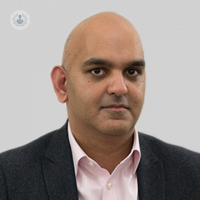Understanding POTS
Written by:POTS may seem like a strange name for a medical condition, but it is no laughing matter. Postural orthostatic tachycardia syndrome affects the patient’s heart and causes tiredness, light-headedness and even mood disorders. But what exactly is POTS? Renowned cardiologist Dr Syed Ahsan explains:

What is POTS?
Postural orthostatic tachycardia syndrome (POTS) is a condition in which the heart rate accelerates dramatically when sitting up or standing. It can increase to over 120 beats per minute within 10 minutes of going from sitting to standing. This can result in the patient feeling very lethargic, with shortness of breath and palpitations.
What are the symptoms of POTS?
Postural orthostatic tachycardia syndrome typically causes a number of symptoms, including:
- Lethargy – patients can feel like they have no energy.
- Shortness of breath – this can manifest due to very little to no exertion
- Light-headedness/dizziness
- On rare occasions, the patient may pass out.
These symptoms are often persistent, lasting for more than six months, and usually prompt the sufferer to seek medical attention. This is important, as the symptoms can have negative impacts on the quality of the patient’s sleep, the patient’s mood (including predisposing them to depression), and their general quality of life.
Who gets POTS?
Postural orthostatic tachycardia syndrome tends to affect younger people, often between the ages of 15-20. In many patients, the symptoms disappear as they get older, while for others it is a lifelong problem. It seems to be more common in women than in men, but the reason for this is unclear.
What causes POTS?
It is unknown exactly what causes POTS. While there are several theories, none have been 100% proven. It is generally believed that POTS is actually a group of conditions that lead to an increased heart rate when standing through different mechanisms, one of which is that not enough blood is being pumped back to the heart. This may be due to insufficient blood volume in the body or a problem with the nerves responsible for co-ordinating the blood vessels carrying blood back to the heart from the extremities.
How is POTS diagnosed?
Fatigue, shortness of breath, and an accelerated heart rate are common symptoms for a number of conditions. The first step of diagnosis is to rule out other possible causes, for example, by running blood tests and an ultrasound scan (echo) of the heart to make sure the problem isn’t a cardiac one.
The next step is a tilt table test. The patient lies on a flat table, which is then tilted so that they are almost standing. The doctor can measure the heart rate and blood pressure in both lying down and standing positions, and the differences between the two help the doctor to make a diagnosis.
How is POTS treated?
There are several ways to treat the symptoms of POTS, but there is currently no cure for the condition. Treatments include:
- Exercise – a structured exercise programme can help manage the symptoms in many cases
- Compression garments – some patients benefit from wearing compression garments on their legs, which help to squeeze blood back towards the heart more efficiently.
- Increased fluid intake – this increases the blood volume and makes it easier for the veins to return blood to the heart. Increasing fluid intake helps the symptoms of POTS in some people.
- Medication – a number of drugs exist to control the heart rate or increase the amount of fluid in the body, helping to treat the symptoms of POTS.
Not every treatment works for every patient. If you suffer from POTS or you think you are showing symptoms, see a cardiologist, who will be able to discuss the options in more detail with you and come up with a treatment plan together.


